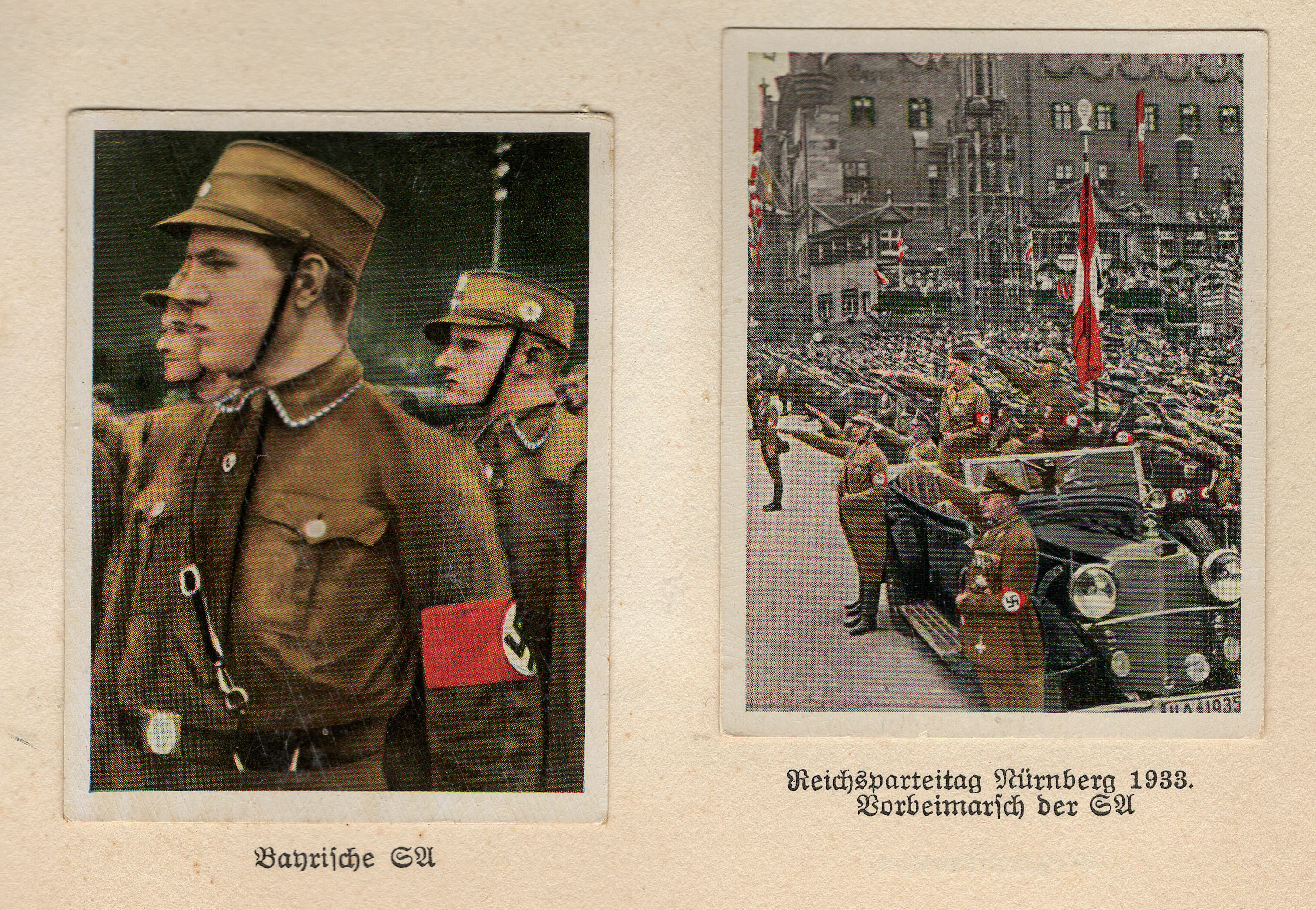Among the objects we found in my father’s effects after his death was what seemed to be a photo album. Carefully sealed in a gallon-sized food storage bag was a crisp, clear book filled with trading cards that Dad had collected during his youth. He had obviously stored it away many, many years ago. It did not, however, contain family photos, but rather trading cards and a chilling reminder of his childhood during Adolf Hitler’s rise to power.

Photo courtesy Tim Wessel
Trading cards, of course, did not originate in Nazi Germany. As early as the 1860s, candy companies in the United States began putting baseball player photos and biographies in packets of gum. Consumers of the candy sometimes noted the strong taste of cardboard but were not deterred from buying more. In 1886, Allen and Ginter, a US tobacco company, started using trading cards as a stiffener for packets of cigarettes, and by 1900, cigarette companies worldwide were including such cards in their packages. In addition to athletes, they featured popular actors and other social dignitaries. Cigarette manufacturers in the United States abandoned this practice when paper became scarce during World War II, but those in Germany did not.
In the years building up to that conflict, Hitler and Joseph Goebbels used every opportunity to glorify Germany and promote the concepts of “one people” and a “master race.” Trading cards represented another avenue by which the Nazi propaganda machine could advance its message. In Dad’s footlocker, we found a 1934 publication, Der Staat der Arbeit und des Friedens (The State of Work and Peace). This 100-page book provided highlights of Hitler’s first year as chancellor and gave collectors a place to organize their prized trading cards. Interspersed with Nazi Party messages were blank spaces into which collectors could paste their cards.
Dad was 11 years old at the time of the book’s publication; he was most likely given a copy of the book as a gift from his favorite uncle, Ernst, who supported Hitler and his party. As an ordinary youngster from a working-class family in northern Germany, Dad, like many children, asked his parents and other adults to give him the cards from their cigarette packs to help him with his collection. He then carefully pasted them in his book for safekeeping.
The cards, distributed by popular brands such as Konstantin and Juno, showcased Nazi leaders, crowds at party rallies, images of Hitler Youth members on the march, and, of course, Hitler himself. The most disturbing are those of the German dictator shaking hands with his admirers, delivering fiery speeches, and touring his fiefdom. It gives me chills to think Dad could have been among the boys with whom Hitler so loved to pose. Individually, these 1¾ × 2¼–inch cards serve as reminders of the masterful use of propaganda by the Nazi Party in its heyday, propaganda that facilitated one of the most horrific periods in human history.
My grandparents had the means to leave Germany a year later, in 1935, before the full extent of the Nazi madness was felt in their homeland. This was no longer the place they wanted to call home. One of the few things my father brought with him was this collection of cards from 1934, a chilling piece of ephemera from an era that must never be forgotten or repeated. When my siblings and I discovered it, I was both fascinated and repelled by the strong messages in the booklet. I gained a new level of appreciation for my grandparents’ decision to emigrate from Germany—and remove their son from the evils that surrounded his childhood.
David K. Wessel is a retired US diplomat and amateur historian with a lifelong interest in the history of the Weimar Republic and the response of ordinary citizens to the rise of Adolf Hitler and the Nazi Party.
Tags: Everything Has a History Europe Cultural History

This work is licensed under a Creative Commons Attribution-NonCommercial-NoDerivatives 4.0 International License. Attribution must provide author name, article title, Perspectives on History, date of publication, and a link to this page. This license applies only to the article, not to text or images used here by permission.
The American Historical Association welcomes comments in the discussion area below, at AHA Communities, and in letters to the editor. Please read our commenting and letters policy before submitting.
Comment
Please read our commenting and letters policy before submitting.










